Alaa Elwany is Making It! In the latest Q&A interview in this series, learn why the Egypt native from an academic family ended up staying in the United States.
Advanced Materials & Manufacturing Technologies Office
May 21, 2024When Alaa Elwany was a kid, he wanted to be a doctor—but not a medical doctor. More than anything, he wanted to earn a doctoral degree and that coveted title: Doctor of Philosophy.
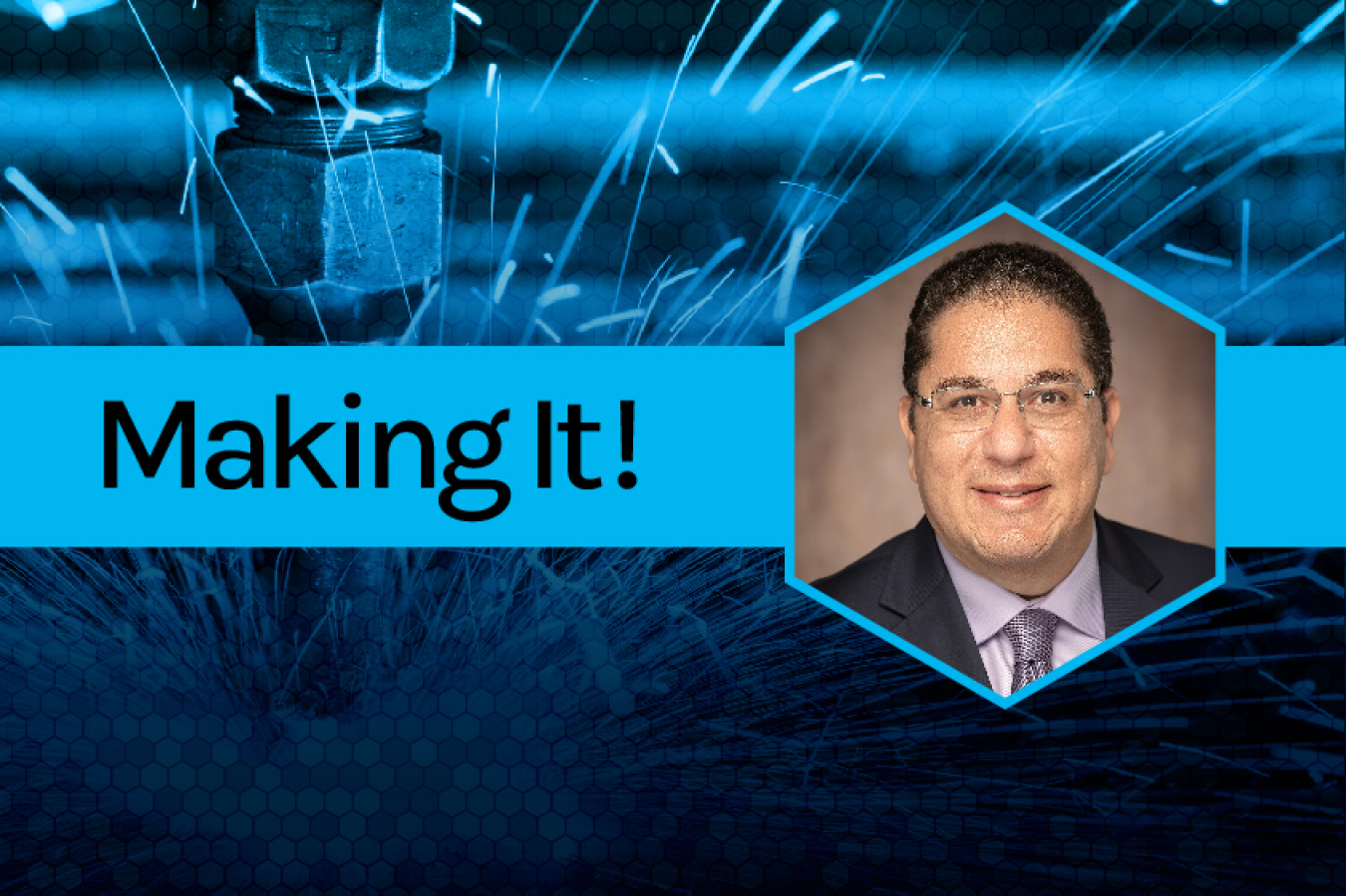
That might seem like an unusual dream for a young kid. But Elwany, who grew up in Alexandria, Egypt, comes from an unusually academic family; his father and four of his uncles all earned their doctorates and worked as faculty in nearby universities.
But the young Elwany still had a problem: which kind of doctorate should he get? Should he follow his father into engineering? He did love turning a mess of tiny plastic building bricks into useful gadgets. Or should he pursue music and capitalize on his love of Bach and talent for classical guitar? He had his amateur classic rock band, after all, and multiple certificates from England’s Royal Academy of Music.
Making It!
AMMTO’s Making It! series spotlights the fresh perspectives of our fantastic fellows, who are making next-generation materials and manufacturing processes possible for our clean energy future.
Today, Elwany’s titles make his choice clear: He’s both a full-time professor of industrial and systems engineering at Texas A&M University and an American Association for the Advancement of Science (AAAS) science and technology policy fellow in the U.S. Department of Energy’s (DOE’s) Advanced Materials and Manufacturing Technologies Office (AMMTO). In both roles, Elwany explores how advances in manufacturing processes—from his long-time love, 3D printing (also known as additive manufacturing), to modern upgrades, like artificial intelligence and cloud computing—are helping the U.S. manufacturing industry become more efficient and sustainable.
“Manufacturing is really on track to transition from a dark and dirty and dangerous environment to a glamorous one,” Elwany said. “Manufacturing is transitioning into a high-tech industry.”
In this Q&A interview, Elwany shares why he ended up staying in the United States (despite plans to return to Alexandria), how a DOE fellowship broadened his horizons, and what excites him most about the next generation of manufacturing workers.
Alaa Elwany (eight from the left) grew up in Alexandria, Egypt in a family full of engineers. Here, Elwany is surrounded by the engineers he taught after he decided to follow his family into academia.
So, how did you end up coming over to the United States?
When I finished my bachelor’s and master’s degrees in engineering in Egypt, I decided to pursue my doctoral degree at the Georgia Institute of Technology. I intended to go back to Egypt because I had a position in my home university, the University of Alexandria. But I career prospects here, and the pace of R&D research fit my personality.
In the United States, they have this ‘outstanding scientist’ category when you’re applying for permanent residence. I felt very privileged to be one of the thousands of people who get into this category. We are getting the best talent in the world.
After you graduated, how did you end up working in 3D printing—or additive manufacturing, as you may call it?
2011 was the revival of additive manufacturing. Then-President Obama launched the Manufacturing USA Network. And my director at General Motors R&D called me to her office and said, “Hey, there’s that new technology called additive manufacturing. How can that benefit us in the auto industry?”
I took over a couple of exploratory projects and thought, “That’s both fun and potentially very impactful!” I’ve been doing it ever since.
Wow, indeed! What do you think your younger self would think about where you've ended up?
As a kid, Elwany had to decide which passion to pursue: engineering or music. Although he ended up giving up his amateur classic rock band to become an engineer, he still plays his guitar to unwind.
Oh, my younger self would definitely be proud. I achieved more than I aspired. Of course, my aspirations grow with me and haven’t stopped to this very day.
When I was younger, I just wanted to get a doctorate and be a faculty member, period. But I was blessed to become a faculty member in one of the top 10 engineering schools in the United States, which translates to one of the best 10 engineering schools in the world. I was also fortunate to gain experience in industrial R&D at one of the nation’s best centers at General Motors.
And, in my DOE fellowship, I got an opportunity to do national-level service and achieve even more impact. And I still have so much to learn and so much to achieve in my career, family, and community.
What motivated you to apply for the DOE AAAS fellowship?
Elwany met his wife (who was also from Alexandria, Egypt) during the final year of his doctorate.
I was previously a fellow with the American Society of Mechanical Engineers and at the National Institute of Standards and Technology. After that ended, I was like, “Oh my God, I still have so much to learn about government agencies and funding and how policy interfaces with science and technology.”
That’s why I pursued the AAAS fellowship, specifically to go to AMMTO.
When I started at DOE, I knew next to nothing about working for the government, except for the bureaucracy and the box checking. After a year of demystification, I found government to be a dynamic place full of very nice people who are both capable and passionate about public service.
What does your fellowship allow you to do that you wouldn't be able to do otherwise?
There are so many different programs to explore in AMMTO. And manufacturing is just one thing. Outside AMMTO, there are other things related to emerging technologies for energy, space exploration, and defense. So, the scientist in me said, “The more you know, the more you recognize you don't know.” There's still so much to learn.
And the fellowship broadened my perspective by 10 to 15 orders of magnitude. And I don't mean manufacturing versus physics. I mean science versus policy. You get to talk to people who are experts in things you would never thought of, get out of your comfort zone, and examine how things fit together in the big picture.
Are there any specific examples you could share of how AMMTO broadened your perspective?
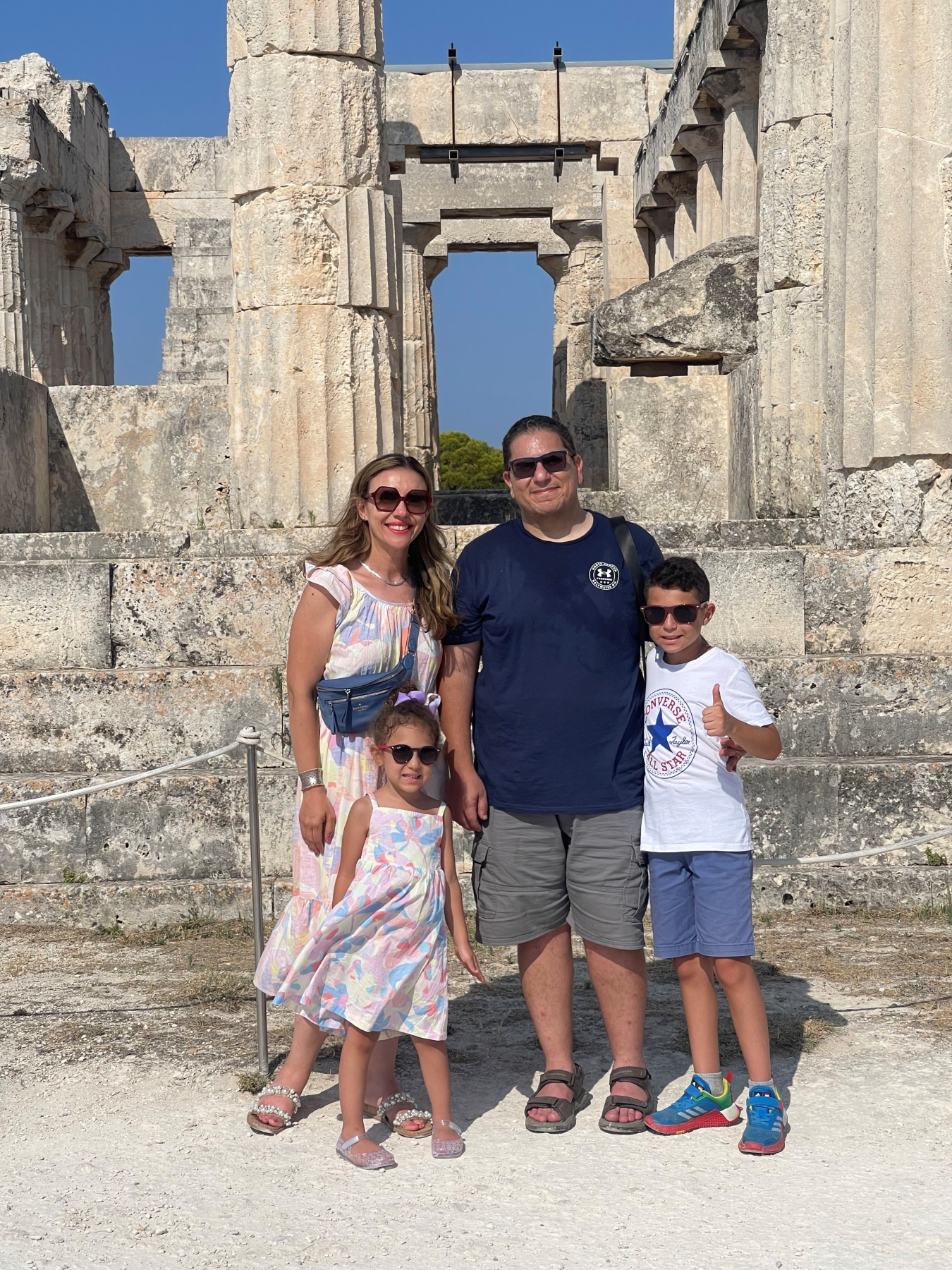
Elwany’s two children both play music, like their father; his daughter plays piano, and his son plays violin (but is more proficient with a basketball than his bow).
Within the very big umbrella of advanced manufacturing, my specific expertise is 3D printing or additive manufacturing. I thought 3D printing defined advanced manufacturing. But at AMMTO, there are people doing battery manufacturing, materials design, semiconductor manufacturing, and more.
I learned there are things happening outside of Alaa’s land.
What excites you most about what's happening in advanced manufacturing today?
With the digital transformation age, we’re starting to use things like artificial intelligence and cloud computing to evolve into smart manufacturing. If I want to make a manufacturing plant more efficient, my human brain can only process a countable number of scenarios. Modern technologies enable us to explore vast designs that we weren't even aware existed. So, they’re liberating us from what we thought were optimal solutions and enable us to reduce energy use and improve sustainability.
And what excites you most about the next generation of manufacturing workers and researchers?
Their access to information is unprecedented. Until my freshman year of college, I didn’t have reliable access to the internet. But the undergraduates that I teach today were born with an iPad and Wi-Fi in their house. So, they have unprecedented access to information and have developed skills to make sense out of these humongous knowledge sources.
Read more Making It! interviews from AMMTO’s fellows and consider applying! Catch up on articles like this as well as other news, events, and funding when you subscribe to The Manufacturing Moment, AMMTO’s monthly newsletter. Learn more about AMMTO’s work in next-generation manufacturing processes, like 3D printing and smart manufacturing.
Relevant News
-
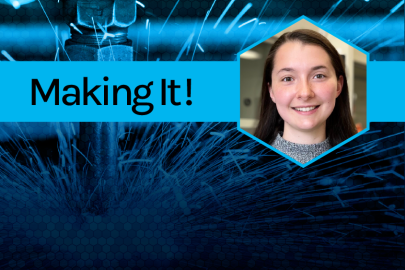 For as long as she can remember, Emilie Lozier has found comfort in science. Now, she applies that same scientific curiosity to tackling energy technology and workforce challenges for a cleaner, greener future.
For as long as she can remember, Emilie Lozier has found comfort in science. Now, she applies that same scientific curiosity to tackling energy technology and workforce challenges for a cleaner, greener future. -
 DOE‘s Established Program to Stimulate Competitive Research Program is accepting applications for Implementation Grants. AMMTO is especially interested in funding research in pursuit of the circular economy, smart manufacturing and energy-efficient microelectronics.
DOE‘s Established Program to Stimulate Competitive Research Program is accepting applications for Implementation Grants. AMMTO is especially interested in funding research in pursuit of the circular economy, smart manufacturing and energy-efficient microelectronics. -
 Happy belated Nanotechnology Day! Nanotechnology is the manipulation and manufacturing of materials and devices on the scale of atoms or small groups of atoms.
Happy belated Nanotechnology Day! Nanotechnology is the manipulation and manufacturing of materials and devices on the scale of atoms or small groups of atoms. -
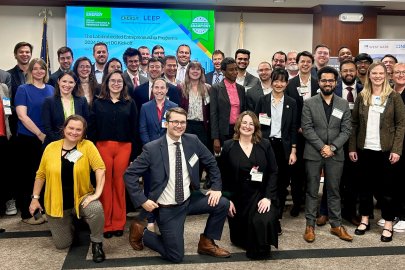 DOE’s Lab-Embedded Entrepreneurship Program (LEEP), managed by AMMTO, welcomed its 2024 cohort to its headquarters in Washington, D.C. to kick off their two-year fellowships
DOE’s Lab-Embedded Entrepreneurship Program (LEEP), managed by AMMTO, welcomed its 2024 cohort to its headquarters in Washington, D.C. to kick off their two-year fellowships -
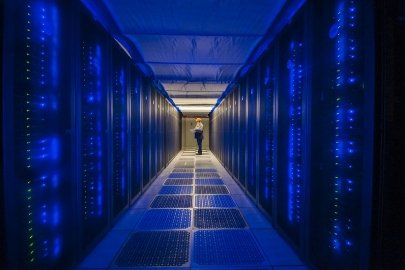 Look out for a funding opportunity from the AMMTO-sponsored High-Performance Computing for Manufacturing program. Coming later this fall!
Look out for a funding opportunity from the AMMTO-sponsored High-Performance Computing for Manufacturing program. Coming later this fall! -
 Jon-Edward Stokes is Making It! In a Q&A interview, how his shifted his academic focus from English to science and what gives his career purpose.
Jon-Edward Stokes is Making It! In a Q&A interview, how his shifted his academic focus from English to science and what gives his career purpose. -
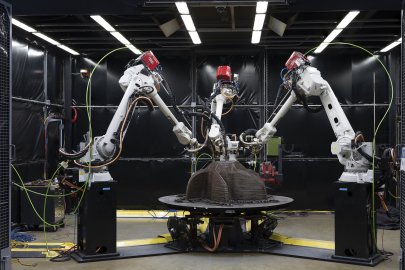 Check out the winning projects funded by AMMTO. Congratulations to the winners!
Check out the winning projects funded by AMMTO. Congratulations to the winners! -
 DOE announced funding for three additional projects focusing on various materials and manufacturing technologies for offshore wind.
DOE announced funding for three additional projects focusing on various materials and manufacturing technologies for offshore wind. -
 Gary DeBoer is Making It! This former AAAS fellow urges us to make decisions that will better the lives of future generations.
Gary DeBoer is Making It! This former AAAS fellow urges us to make decisions that will better the lives of future generations. -
A $33 million funding opportunity aims to accelerate the advancement of smart manufacturing technologies and processes necessary to develop and deploy the innovative technologies and materials needed for the nation’s clean energy transition.
Get the latest Making It! profile and other advanced materials and manufacturing news in your inbox.

